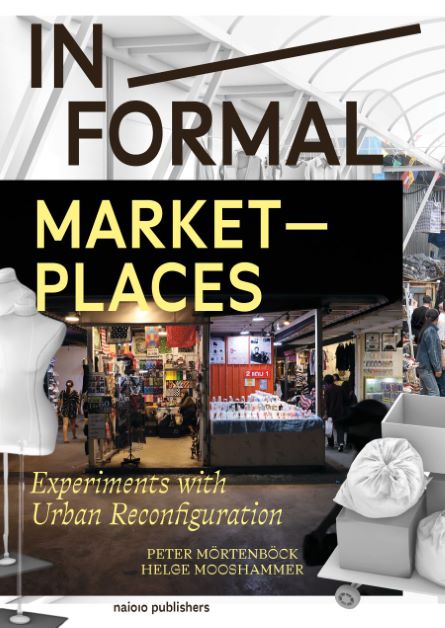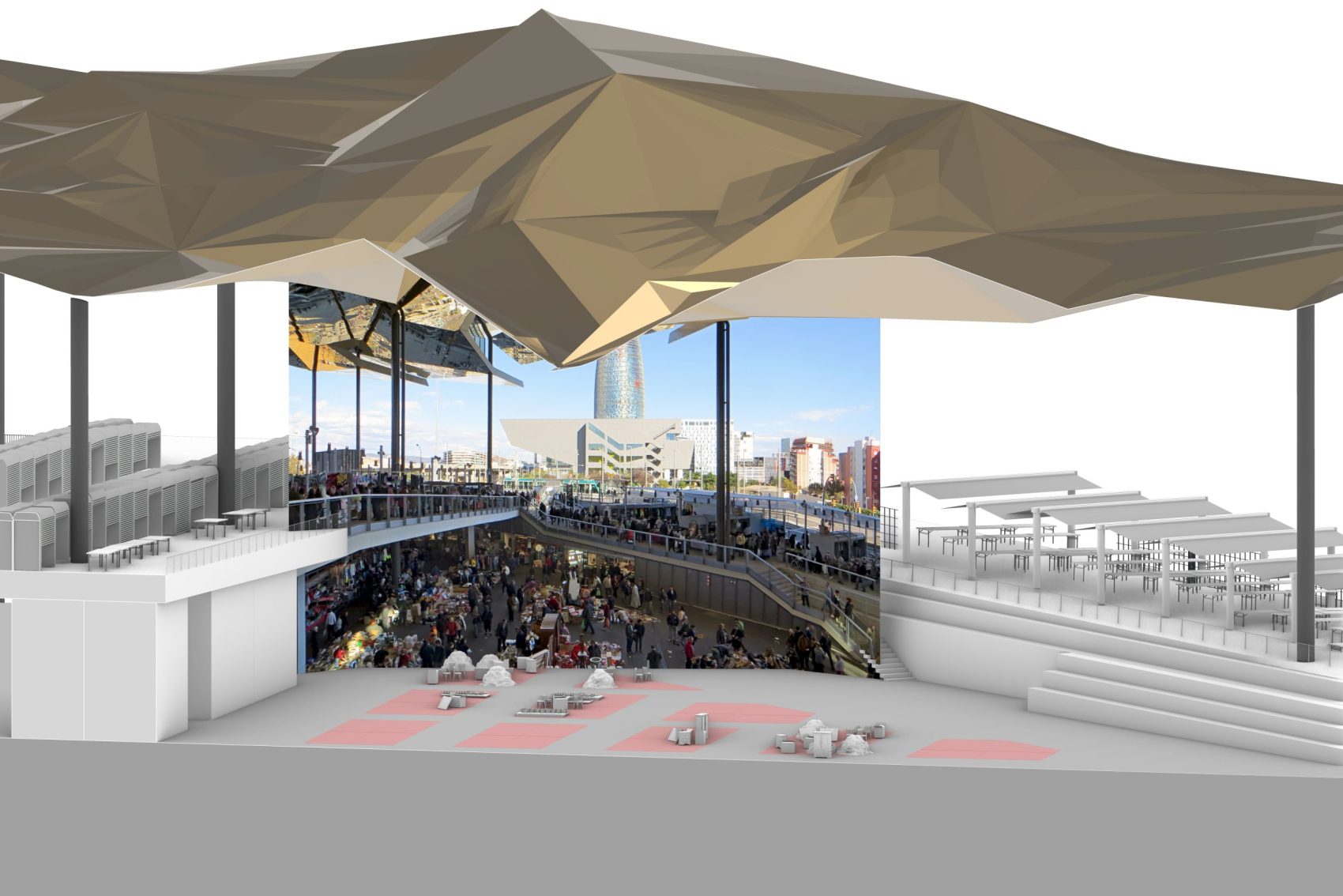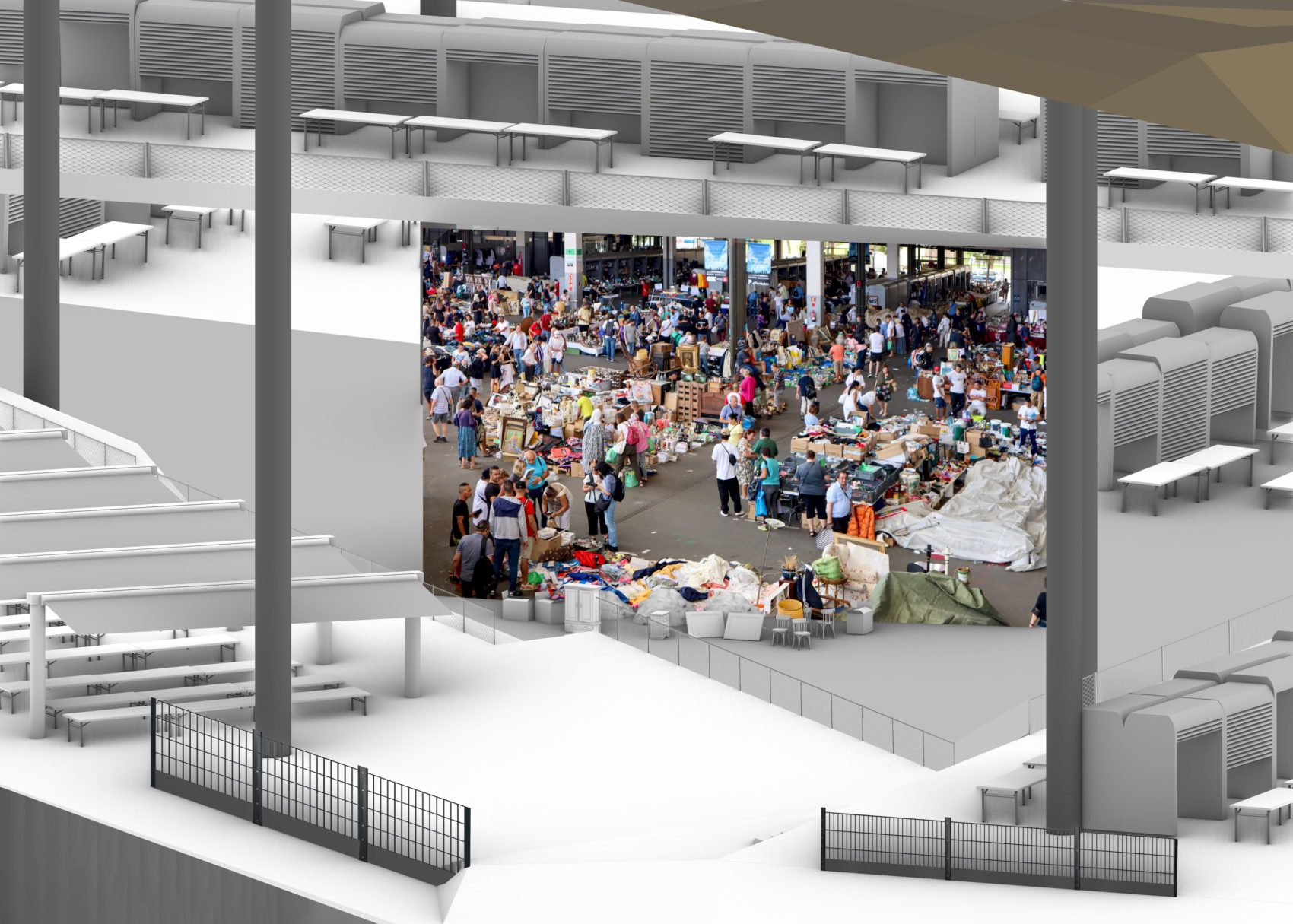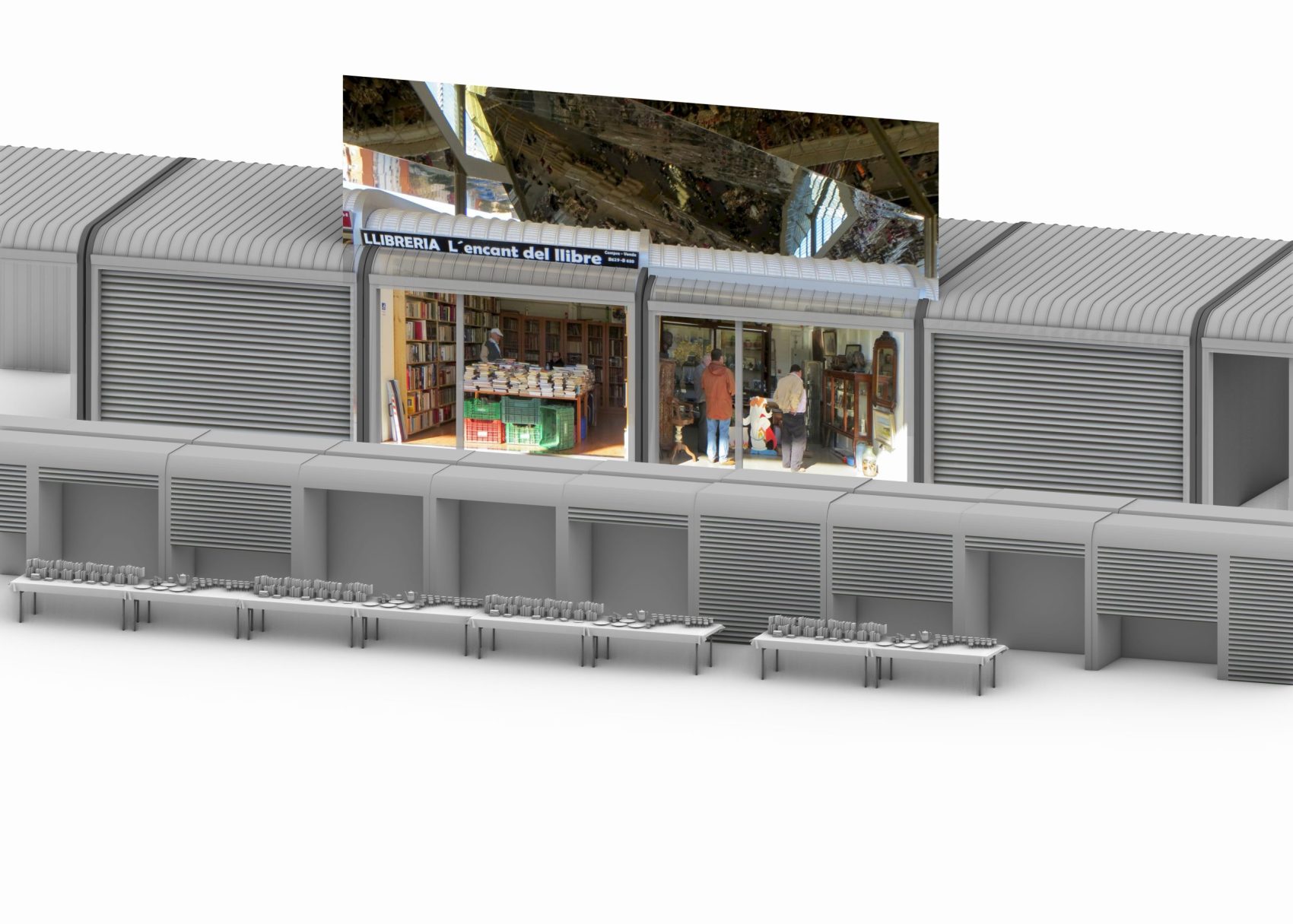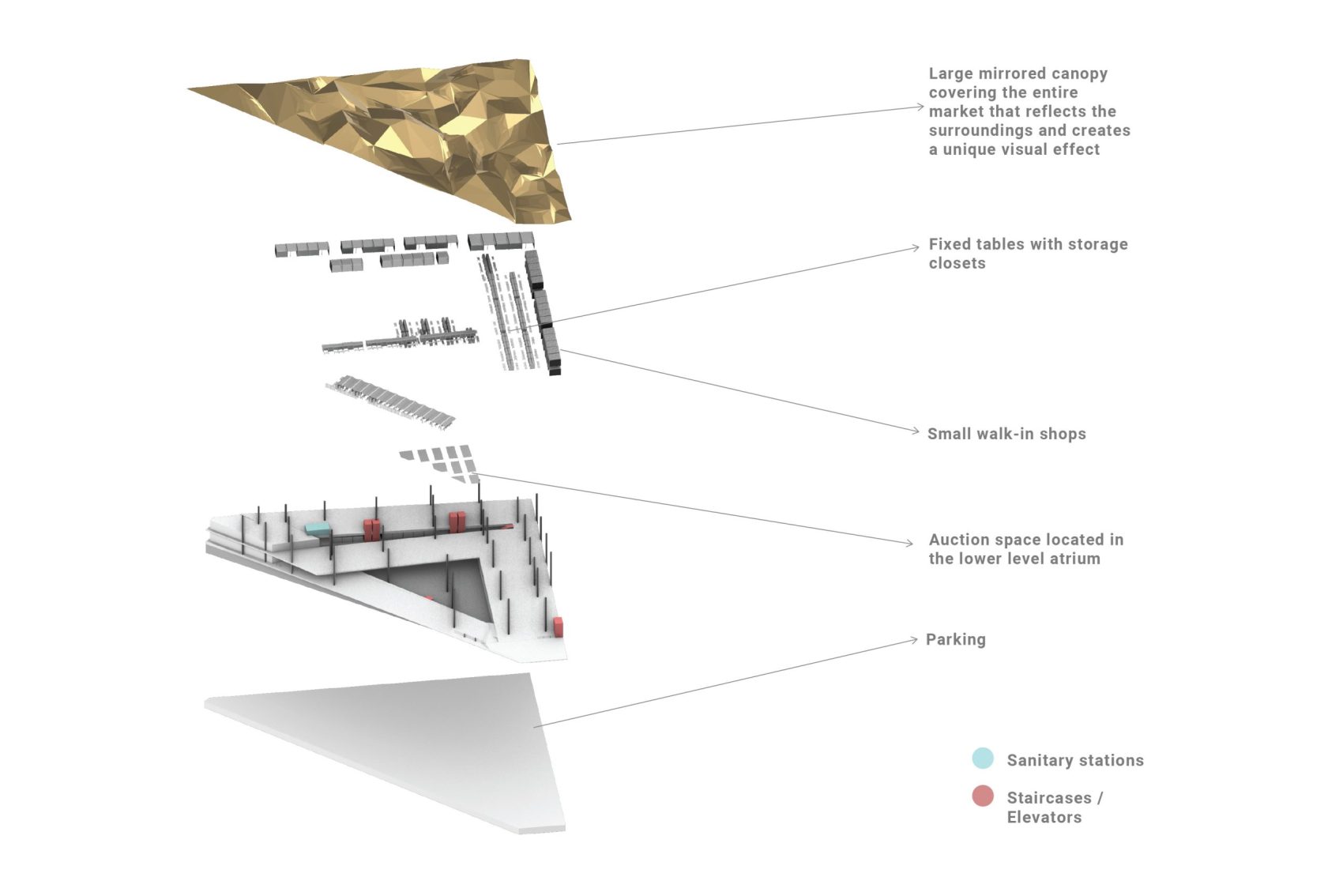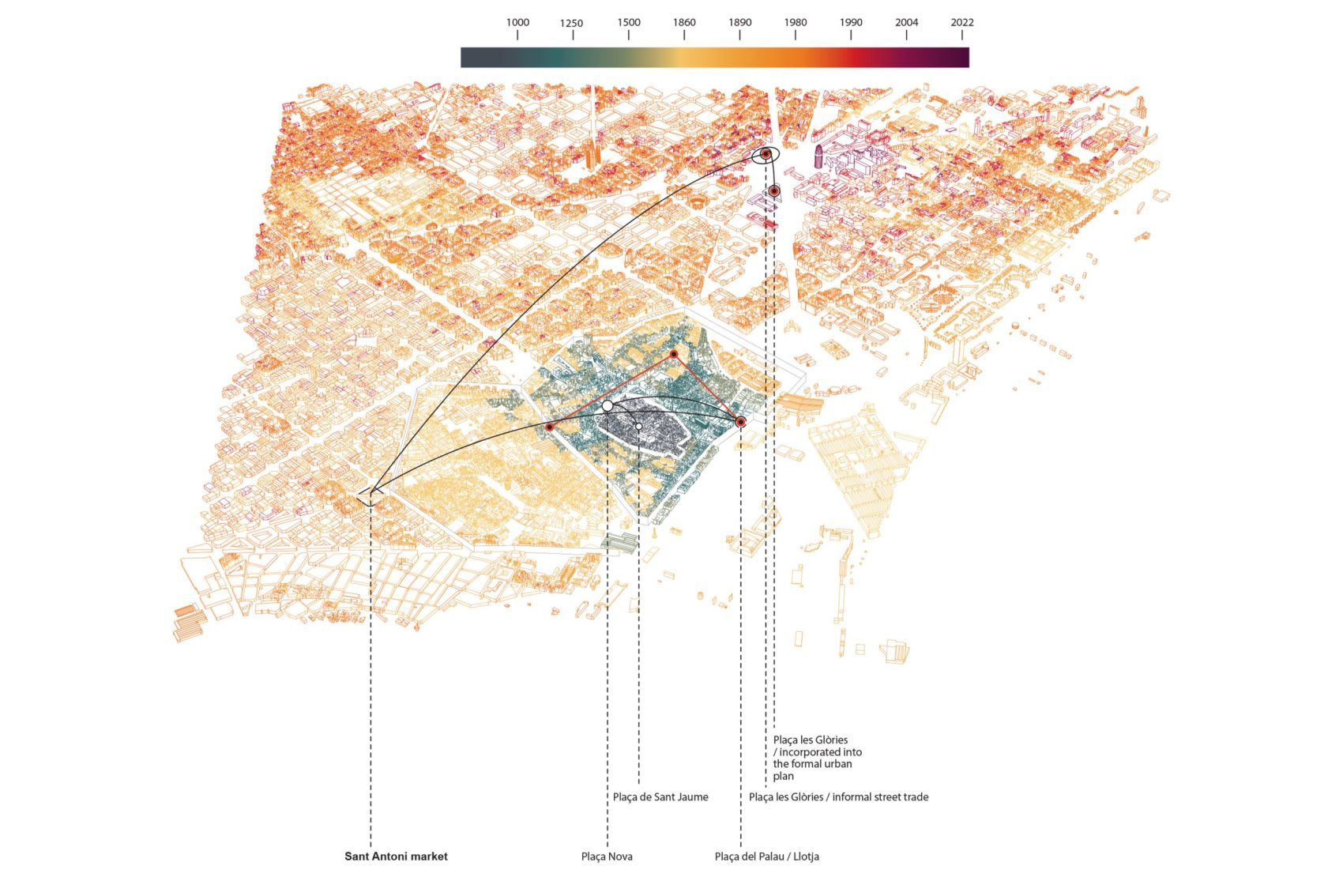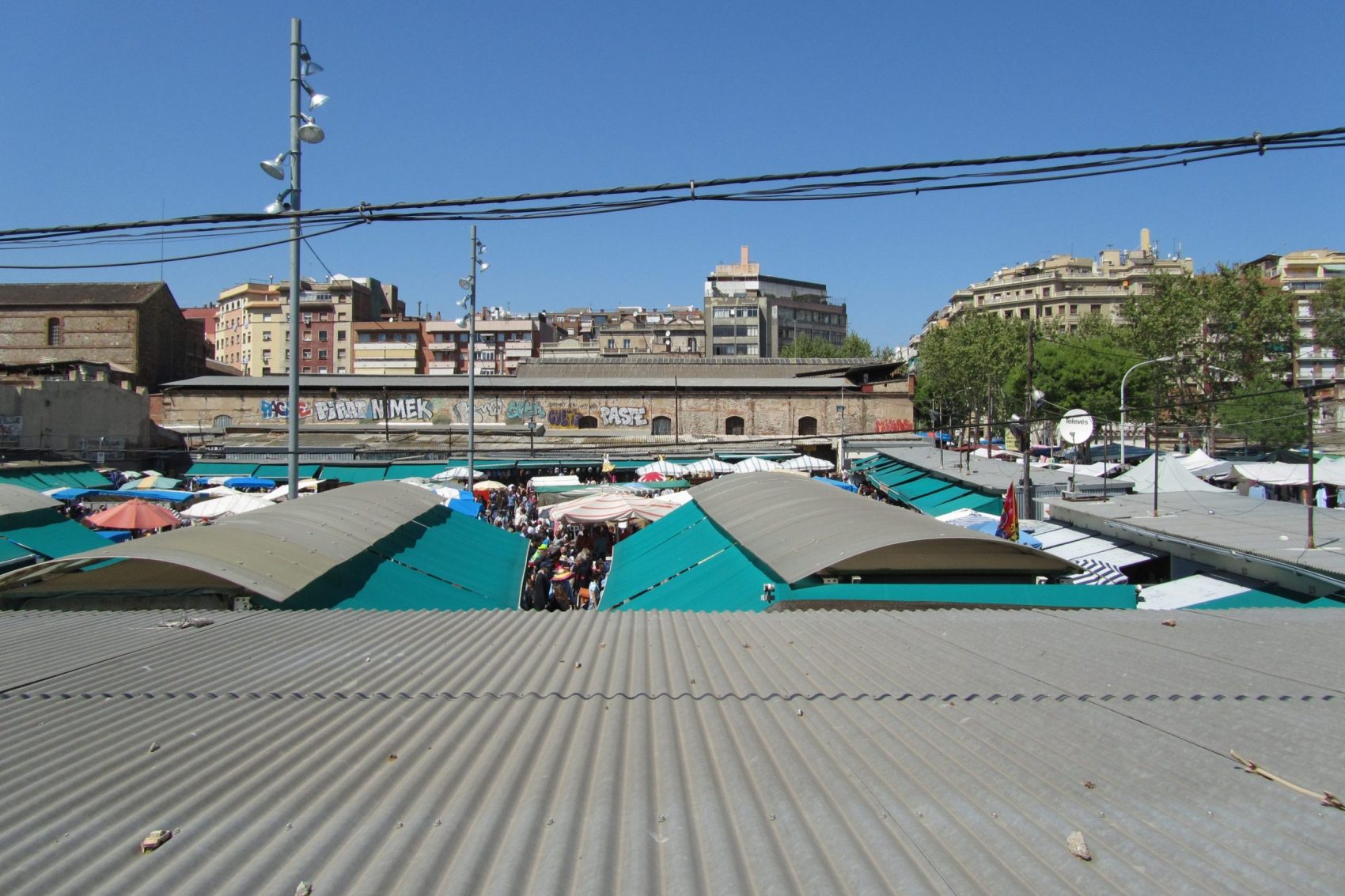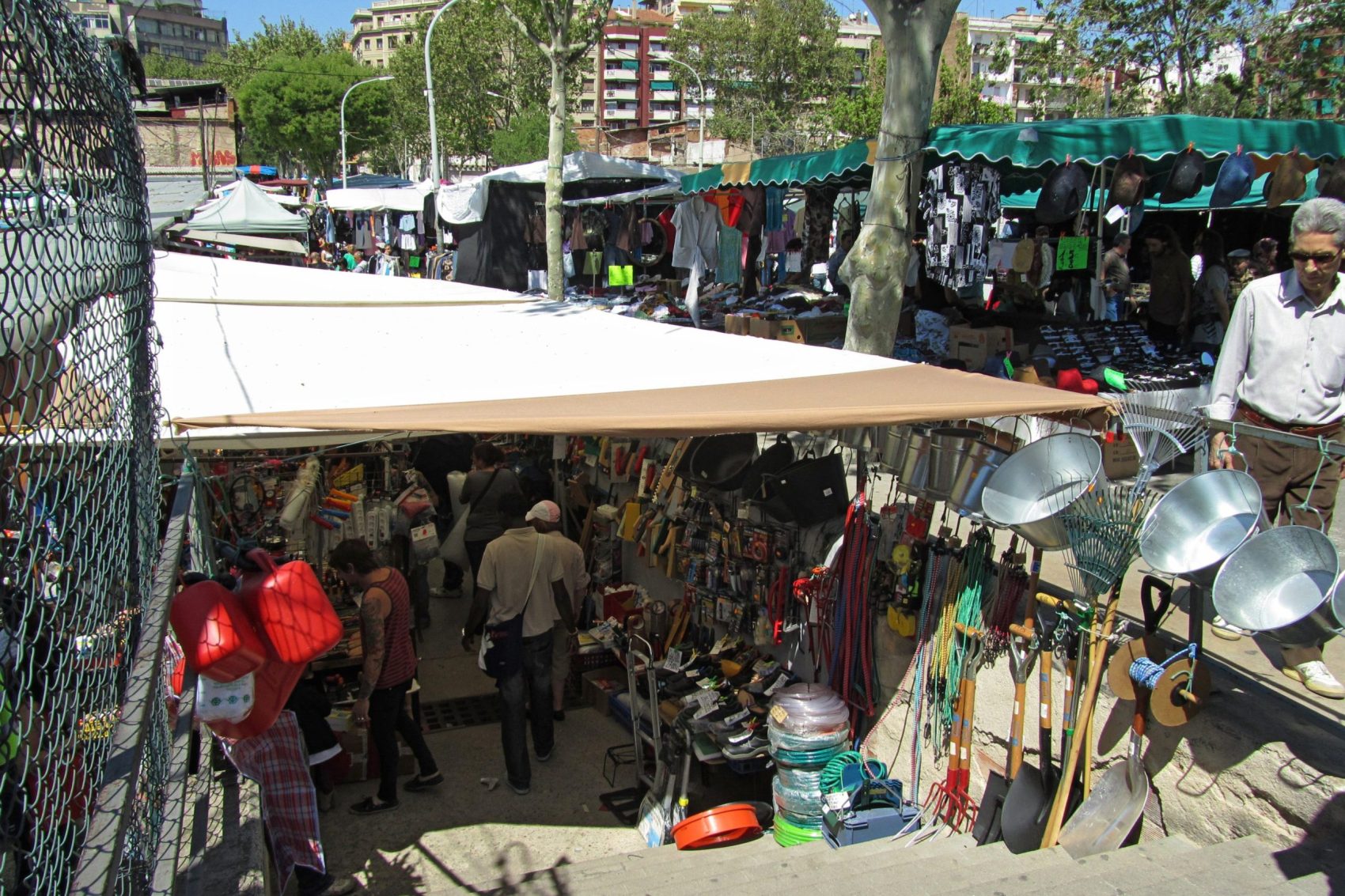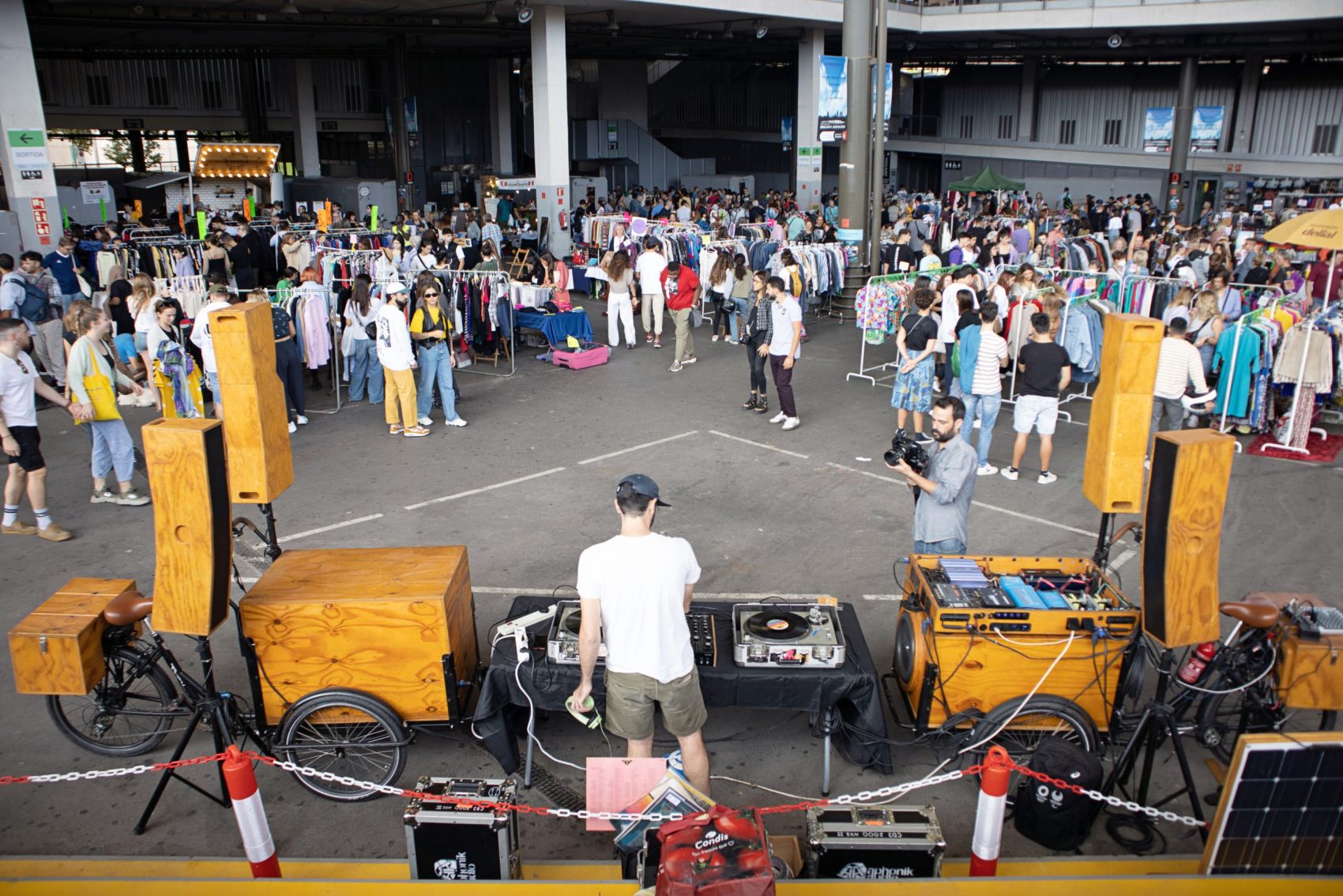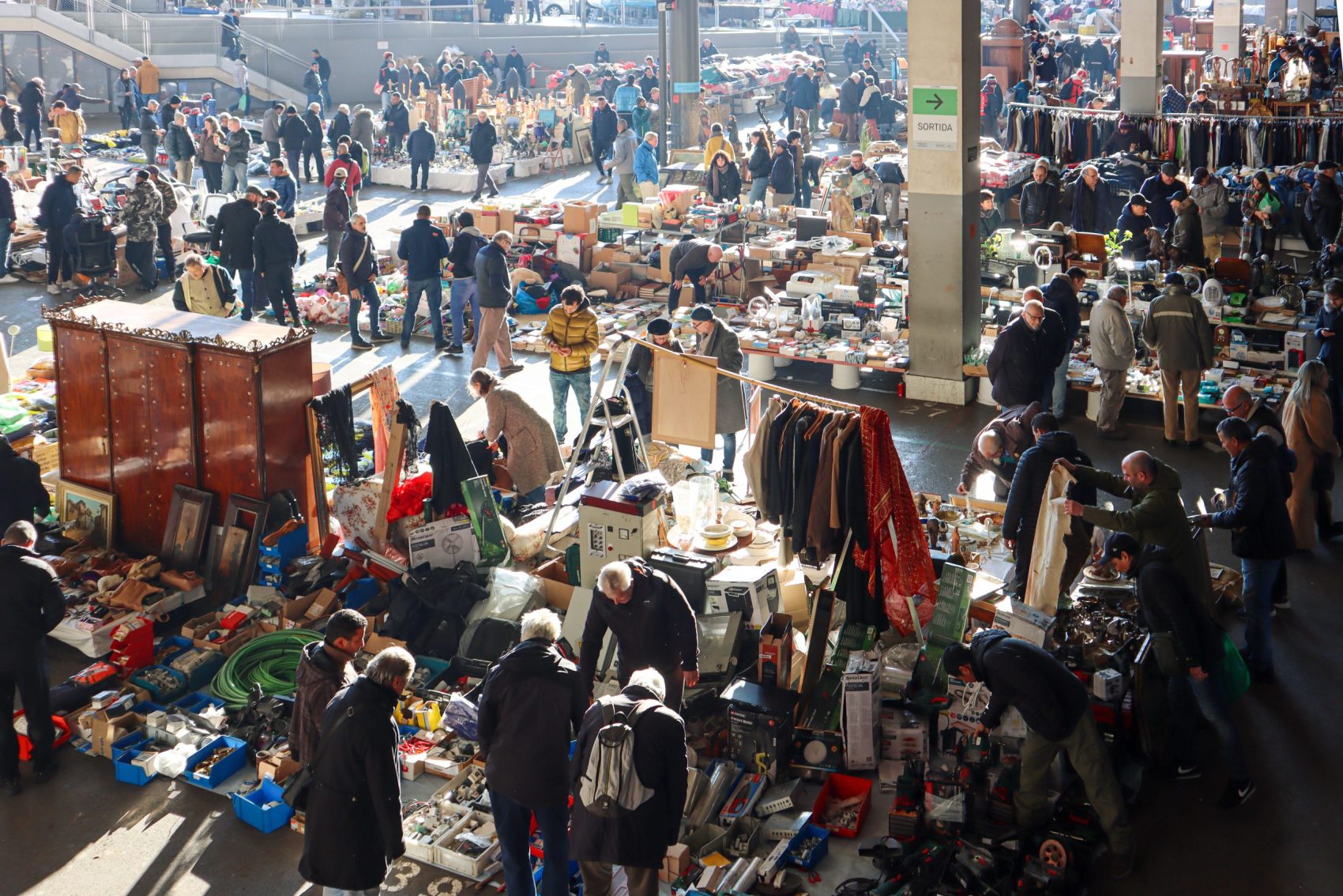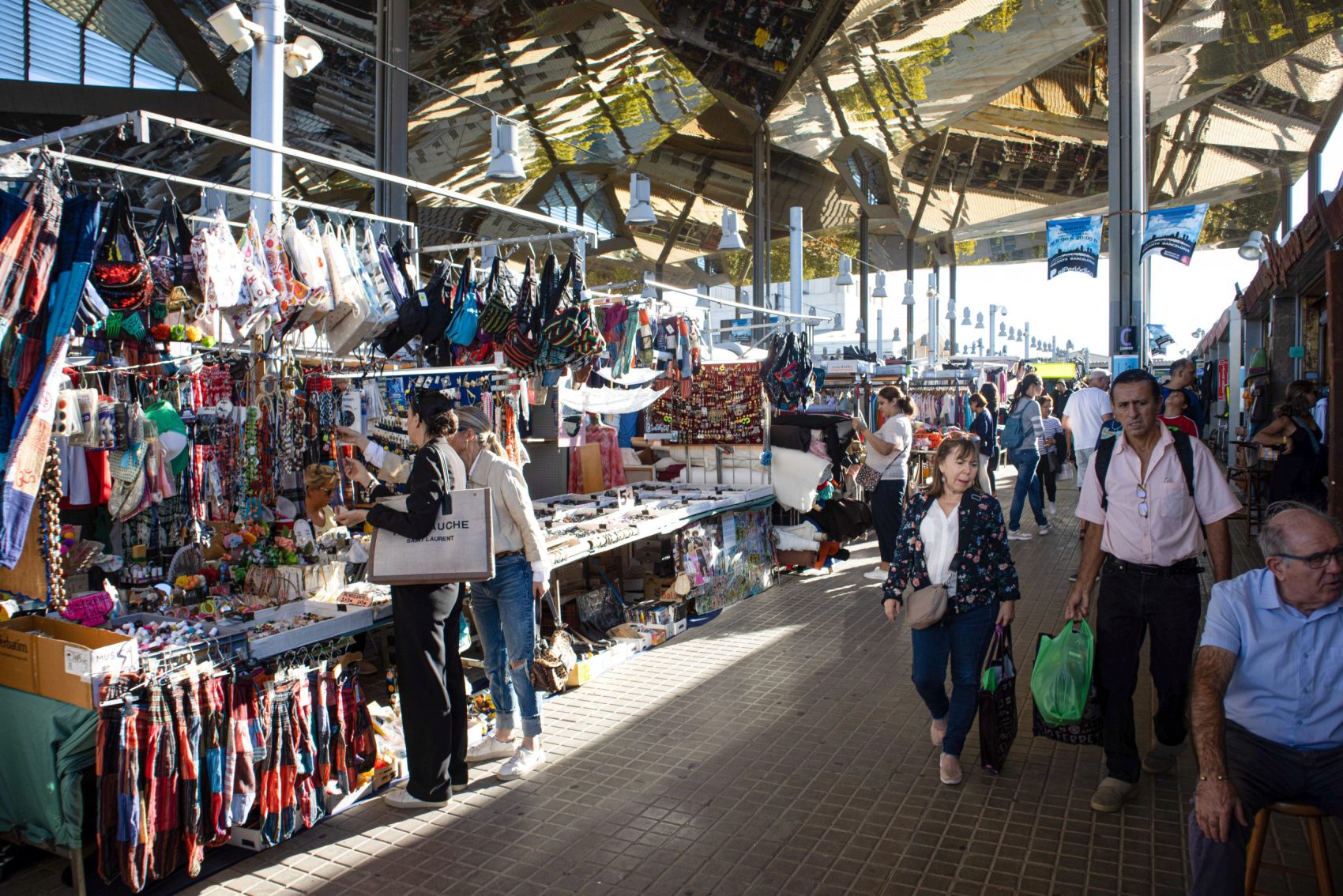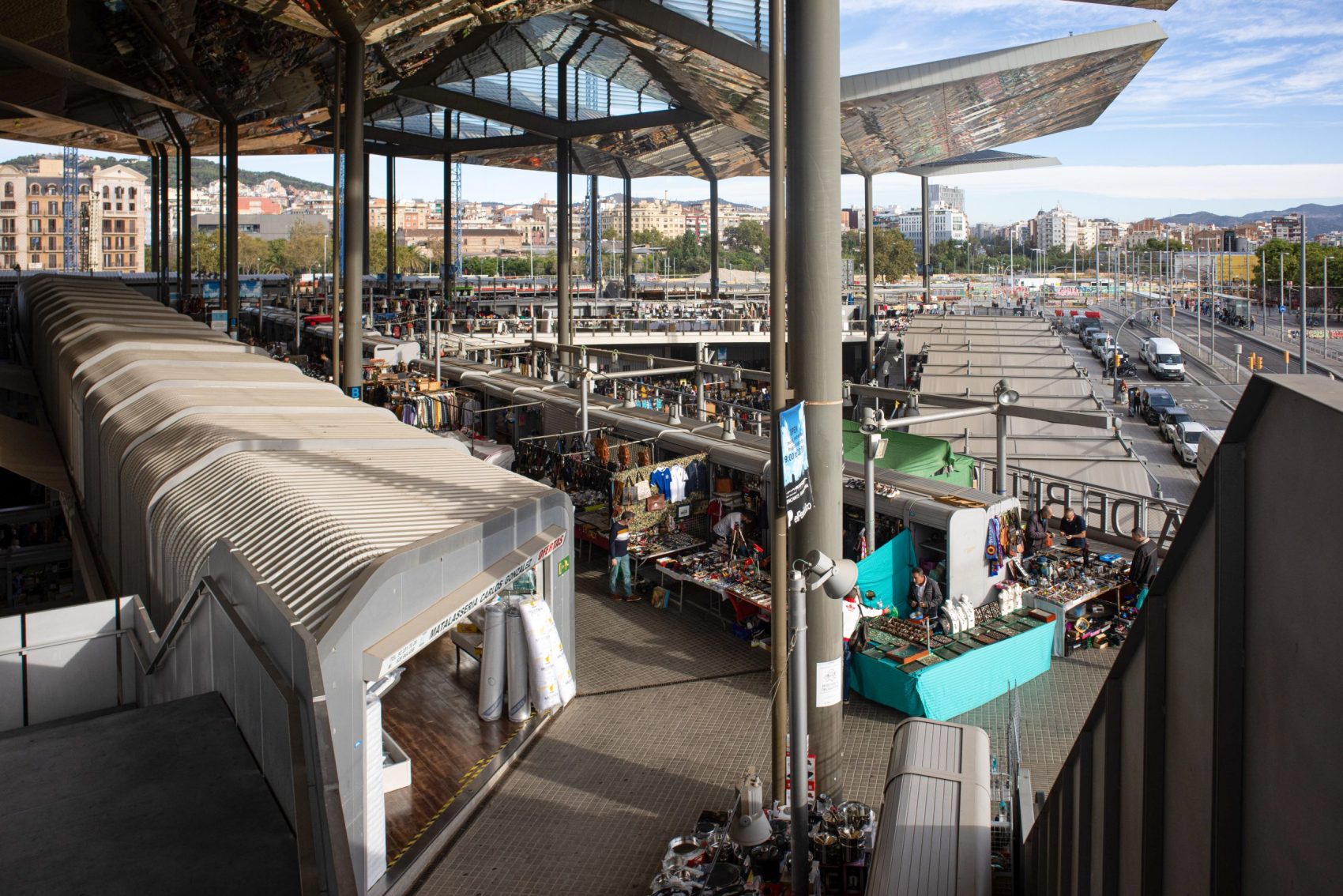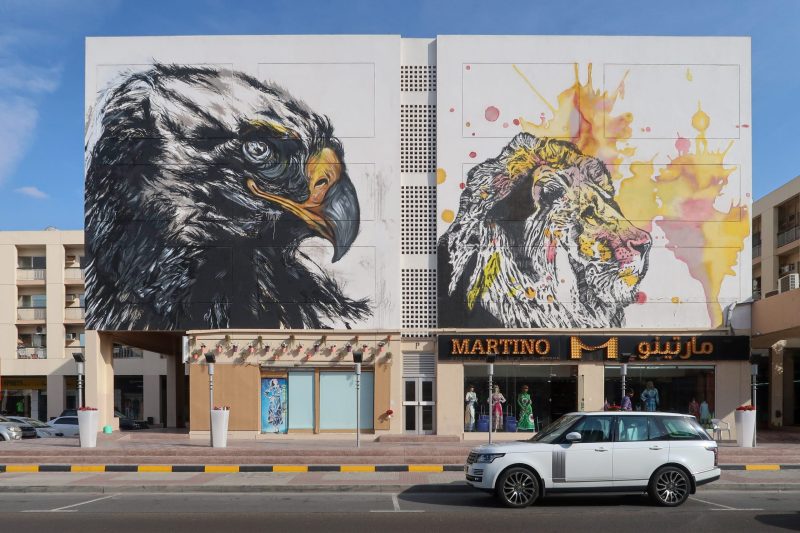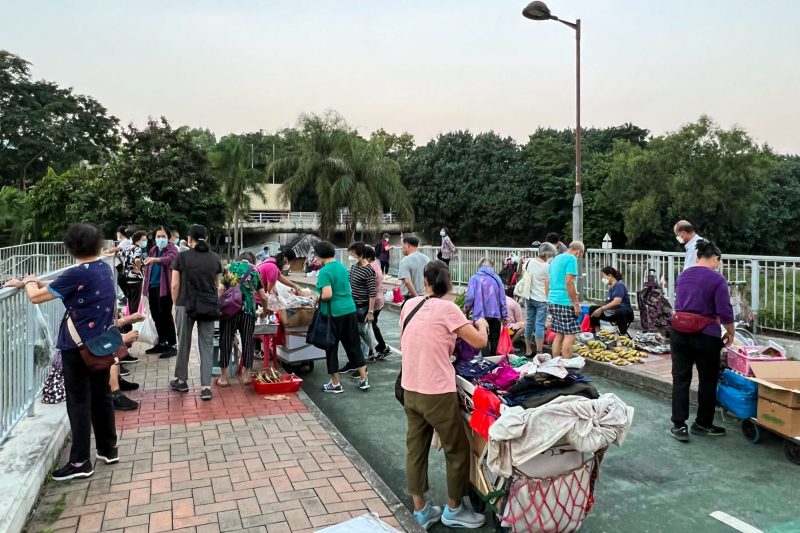- Improvement
- FWF
- 2018-2023
- Incorporating Informality
CASE STUDY: ENCANTS VELLS
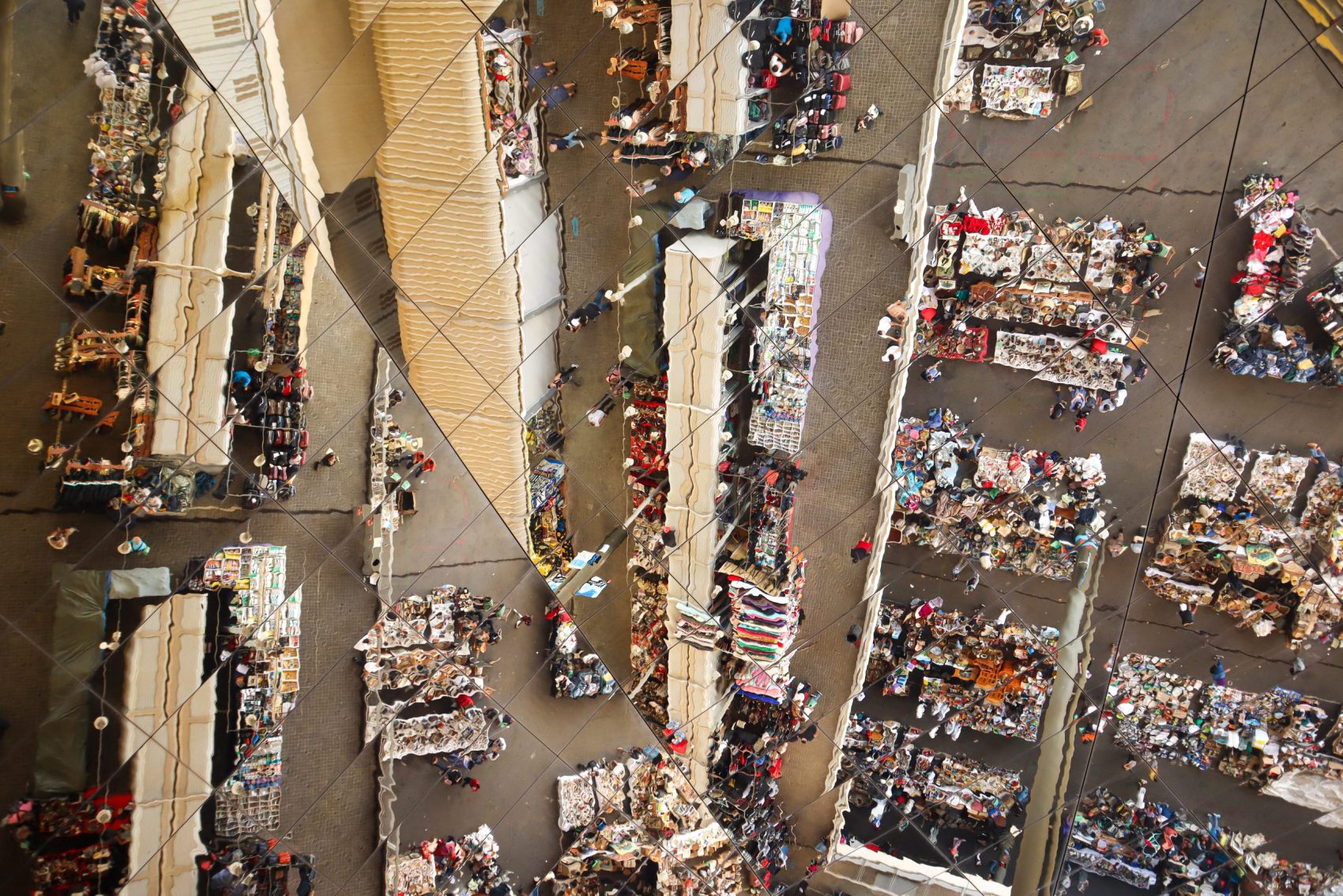
Encants Vells, Barcelona, 2022
THE URBANISATION OF ‘EXCHANGE’ IN BARCELONA
On the one hand, Encants acts as a symbol or spectacle for the culture of Barcelona, suggested to international visitors in guidebooks and ‘must-do’ lists since the 1990s. At the same time, the market’s operations remain localised, obscured, and built through the shared bonds of those who have participated for decades, if not generations. It is a market that, emerging from its urban fabric, becomes a concrete manifestation of the local, global, and ‘glocal’ economic circuits shaping that fabric.
Archival evidence shows that around 1808, the market was located on Ramblas de Barcelona, extending from Palacio Moja to the barracks of Estudis. After several prohibitions by the Barcelona authorities, in 1822, what was described as ‘the exchange of old clothes and other items’ was moved to the Paseo de la Explanada, located between El Born and the convent of Sant Agustí Vell. Finally, in 1835 a part of the Fira del Bellcaire was moved to the so-called Voltas dels Encants, next to the Carrer del Consolat del Mar.
In 1888, the market was forcibly moved to make space for the Universal Exposition of 1888, with its new location on the Avinguda de Mistral, where the Sant Antoni market stands today. In anticipation of the 1929 International Exposition, it was once again transplanted outside the city centre to Plaça de les Glòries Catalanes, an industrial area on the periphery of Barcelona. This movement was another effort to extradite the ‘traperos de carretón,’ and its association with ruggedness, informality and chaotic relations away from the urban centre.
Location(s): BARCELONA, SPAIN
On-Site Collaborator:CARMEN LAEL HINES
Visualisations: BILAL ALAMELOVRO KONCAR-GAMULINJOANNA ZABIELSKA
Photography:
PETER MÖRTENBÖCK
HELGE MOOSHAMMER
CARMEN LAEL HINES
Results of this case study were published in:
After 1929, the Encants market existed on what was then the periphery of Barcelona, at the Plaça de les Glòries Catalanes and Camp del Sidral del Clot (on the mountainside, between Castillejos and Dos de Maig). It remained there for over 80 years. In 2013, it was transferred to a new slick market building designed by B720 Fermin Vasquez Architects, also in les Glòries, at the square on the Avinguda Meridiana, an area that over the past few decades has rapidly transformed from an industrial area on the city’s periphery to a ‘new cultural, social and touristic axis of Barcelona.’
This building has five floors, three of which are connected via an elevating platform. The large canopy above the market is open on all sides. Nearly 25 metres high, it is comprised of stainless-steel panels that appear as either gold or silver depending on the angle and the light. The canopy, which resembles a huge mirror, protects the market from rain while maintaining its open-air character. It exhibits the exchange occurring on the ground floor, the second-hand part of the market, in kaleidoscopic reflections that layer and colasece stop one another in a spiral dance of figures and brightly coloured goods. Fixed market stalls line ramps that wrap like a Moebius strip around a sunken atrium.
This open area is used for morning auctions that hark back to the origins of Encants Vells in the Middle Ages.The market stall design ranges from roll-top closets fronted by fixed tables to walk-in shops. From most angles, the market is undeniable Instgrammabale, as well as logistically functional. In the inside of this new market structure, the Encants market does not feel like a building, but an infrastructure oriented towards the act of looking. From the outside, it looks like a monument.
CONTRIBUTOR(S)
Carmen Lael Hines is a writer, researcher and curator particularly interested in tech, bodies, and the implications of their entanglements.
